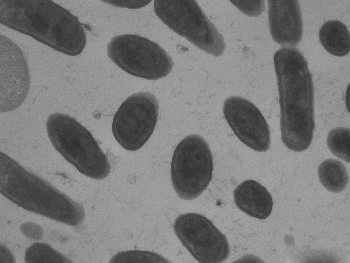Latest News Archive
Please select Category, Year, and then Month to display items
04 April 2024
|
Story Lunga Luthuli
|
Photo SUPPLIED
 Dr Juliet Kamwendo champions gender-inclusive climate action in Africa. Her expertise at the recently held AFR100 workshop highlighted vital steps towards sustainable and equitable development.
Dr Juliet Kamwendo champions gender-inclusive climate action in Africa. Her expertise at the recently held AFR100 workshop highlighted vital steps towards sustainable and equitable development.
Dr Juliet Kamwendo, Lecturer and Programme Director for Gender Studies in the Centre for Gender and Africa Studies at the University of the Free State, is spearheading efforts to integrate gender considerations into Africa's climate restoration agenda. Reflecting on her involvement, Dr Kamwendo stated, "This is particularly crucial, as women make up almost 50% of the population in Africa, and the depletion and degradation of land affect them disproportionately."
She recently served as a gender expert at the AUDA-NEPAD AFR100 workshop in Ouagadougou, Burkina Faso, from 25 to 29 March 2024. This initiative aims to restore forests and degraded land across Africa by 2030, with a focus on gender equality.
The workshop emphasised the integration of gender perspectives into the AFR100 project, acknowledging the disproportionate impact of land degradation on women. Dr Kamwendo's expertise highlighted the need to empower women in climate change interventions, addressing existing gender inequalities exacerbated by environmental degradation.
“Women – who are primarily responsible for household food security and water provision – bear the brunt of environmental degradation, leading to increased workloads, reduced income opportunities, and heightened vulnerability to climate-related disasters. Furthermore, the loss of forest cover and biodiversity further exacerbates the challenges faced by women, particularly in rural areas where they depend heavily on natural resources for their livelihoods,” added Dr Kamwendo.
Her participation highlights academia's crucial role in fostering inclusive and sustainable development, emphasising interdisciplinary collaboration to tackle complex environmental challenges. Through initiatives such as AFR100, stakeholders are working towards a more resilient and gender-responsive future for Africa.
Research eradicates bacteria from avocado facility
2017-01-17

Listeria monocytogenes as seen under an electron
microscope. The photo was taken with a transmission
electron microscope at the microscopy unit of the UFS.
Bacteriophages (lollipop-like structures) can be seen
next to the bacterial cells.
Photo: Supplied
“The aim of my project was to identify and characterise the contamination problem in an avocado-processing facility and then to find a solution,” said Dr Amy Strydom, postdoctoral fellow in the Department of Microbial Biochemical and Food Biotechnology at the University of the Free State (UFS).
Her PhD, “Control of Listeria monocytogenes in an Avocado-processing Facility”, aimed to identify and characterise the contamination problem in a facility where avocados were processed into guacamole. Dr Strydom completed her MSc in food science in 2009 at Stellenbosch University and this was the catalyst for her starting her PhD in microbiology in 2012 at the UFS. The research was conducted over a period of four years and she graduated in 2016. The research project was funded by the National Research Foundation.
The opportunity to work closely with the food industry further motivated Dr Strydom to conduct her research. The research has made a significant contribution to a food producer (avocado facility) that will sell products that are not contaminated with any pathogens. The public will then buy food that is safe for human consumption.
What is Listeria monocytogenes?
Listeria monocytogenes is a food-borne pathogenic bacterium. When a food product is contaminated with L. monocytogenes, it will not be altered in ways that are obvious to the consumer, such as taste and smell. When ingested, however, it can cause a wide range of illnesses in people with impaired immune systems. “Risk groups include newborn babies, the elderly, and people suffering from diseases that weaken their immune systems,” Dr Strydom said. The processing adjustments based on her findings resulted in decreased numbers of Listeria in the facility.
The bacteria can also survive and grow at refrigeration temperatures, making them dangerous food pathogens, organisms which can cause illnesses [in humans]. Dr Strydom worked closely with the facility and developed an in-house monitoring system by means of which the facility could test their products and the processing environment. She also evaluated bacteriophages as a biological control agent in the processing facility. Bacteriophages are viruses that can only infect specific strains of bacteria. Despite bacteriophage products specifically intended for the use of controlling L. monocytogenes being commercially available in the food industry, Dr Strydom found that only 26% of the L. monocytogenes population in the facility was destroyed by the ListexP100TM product. “I concluded that the genetic diversity of the bacteria in the facility was too high and that the bacteriophages could not be used as a control measure. However, there is much we do not understand about bacteriophages, and with a few adjustments, we might be able to use them in the food industry.”
Microbiological and molecular characterisation of L. monocytogenes
The bacteria were isolated and purified using basic microbiological culturing. Characterisation was done based on specific genes present in the bacterial genome. “I amplified these genes with polymerase chain reaction (PCR), using various primers targeting these specific genes,” Dr Strydom said. Some amplification results were analysed with a subsequent restriction digestion where the genes were cut in specific areas with enzymes to create fragments. The lengths of these fragments can be used to differentiate between strains. “I also compared the whole genomes of some of the bacterial strains.” The bacteriophages were then isolated from waste water samples at the facility using the isolated bacterial strains. “However, I was not able to isolate a bacteriophage that could infect the bacteria in the facility.